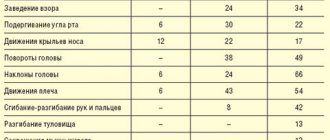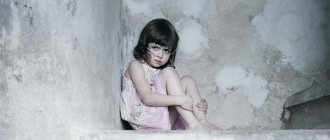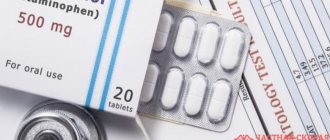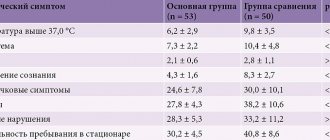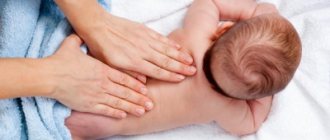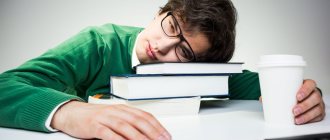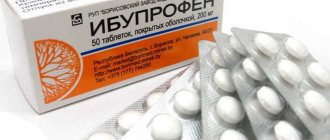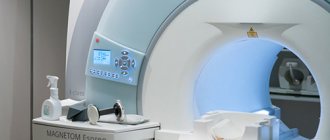Features of the formation of neurosis in a child
Next, consider the origin of childhood neuroses.
Their peculiarity in children is their formation against the background of personality immaturity. To understand, the personality of children is determined by the type of upbringing in the family.
It is worth highlighting the main “inadequate” types of upbringing:
- Insufficient attention to the baby is “hypocustody.”
- Excessive attention is “overprotection”.
- Cruel upbringing.
- Authoritarian parenting.
As a rule, improper upbringing can harm the development of a child’s personality and temperament. As a result, negative character traits and inadequate reactions on the part of the child appear. Sooner or later, this leads to a feeling of inferiority, against the background of which any negative external influence can lead to neurosis. The role of a negative factor can be: a rude word, a loud remark, a change in living conditions and much more.
Given the immaturity of personality in children, typical forms of neurosis rarely develop. More often they have simpler disorders - systemic neuroses. They can manifest themselves in any organ and organ system. It is believed that the choice of damage to one or another organ depends on the hereditary susceptibility (weakness) of the organ or body system. Such weak points in children are often the speech-motor system (formation of stuttering) and the urinary system (development of enuresis).
There is also another development mechanism: a combination of increased nervous tension and the performance of a certain action or movement at this moment. So, this action or movement can lead to the formation of tics in the baby. Thus, neuroses in childhood most often manifest themselves as tics, stuttering and enuresis. In the absence of treatment, systemic neuroses with age often become “classical”, as in adults.
Stuttering is common in children with neuroses.
Temperamental traits of impressionable children - children with a weak nervous system:
How do children of this type behave? From an early age, they are extremely sensitive and receptive: they can quickly and easily notice minor changes in people’s moods, as well as the faintest rustles, sounds, and shades. They even see what goes unnoticed for many: a slight shadow of annoyance or a spark of joy on the face, imperceptible movements, minor changes in a suit or gait.
These children get very excited when they read books and watch movies. Events captivate them so much that tears appear in their eyes, although they try to distract themselves from the exciting events. Memories of them cause inexplicable mental pain.
Increased sensitivity and nervousness also manifest themselves when they have to decide or do something on their own, especially in an unfamiliar and unusual environment. Impressionable children react to everything new with great, even excessive, expenditure of energy, often becoming preoccupied. Some trifle, and the child already has a tense face, a deep sigh. For example, a father instructed his son to pay a taxi driver, and he experiences this as the most important event in his life.
The characteristics of children with a weak nervous system are also manifested in educational and physical work. It is easier to teach such students to be thorough in everyday affairs than children of strong types, especially sanguine and choleric people. They work better in monotonous conditions, quickly and easily get used to the daily routine and work, since monotonous activity cannot cause very great excitement, which can lead to excessive expenditure of energy and inhibition of the nervous system. Therefore, both parents and teachers have to reckon with the lack of endurance and easy fatigue of impressionable children.
Prolonged hard work, whether physical or mental, is tiring for them. If they work well in the first lessons, then later they get worse. Children of weaker types get tired especially quickly in new conditions. It is especially difficult for them to study in the first and fifth grades. They work best at home, when no one disturbs them, or in a secluded corner of the library.
In a noisy, tense environment, simple tasks seem difficult to children with weak nervous systems, and easy tasks seem difficult. During exams and other exciting events, they are either passive, lethargic, or irritable, noisy, and if some misfortune happens, then completely exhausted and sick.
Unlike students of strong types, children of weak nervous types show rapid inhibition and stiffness if they have to act depending on the situation. When an unexpected question is put before them and they find it difficult to answer right away, they usually look confused, have a tense face, and don’t know what to do with themselves. In class, after asking a question, they timidly raise their hand, and when they hear their last name, they shudder and, slowly standing up, answer.
During exams, “they worry so much that it leads to loss of appetite, insomnia and nightmares. Then the feasible task seems beyond their strength and the solved task seems unsolved. Successful completion of exams calms sensitive children; they say: “Why did you have to worry so much? This won't happen anymore." But “this” is repeated again and again - these are the characteristics of children with a weak nervous system.
An impressionable child may be offended over a trifle: cry if they finished a conversation before his appearance or, say, did not tell a joke that everyone was laughing at (and not at all at him).
We dwelled on some of the temperamental traits of impressionable children. It must also be said that each of them may have other characteristics: one is fast, the other is slow, one is balanced, the other is unbalanced. This once again indicates that in human society there are no unchanging, “pure” nervous types. A child’s behavior is formed gradually, under the influence of social influences, personal experience and upbringing.
Types and symptoms of neuroses
There are such types of general neuroses as:
- Hysteria . In children, this condition manifests itself as an excessive, inadequate reaction to dissatisfaction with something. Children with hysteria often “fake it.” They can achieve what they want by manipulating their parents. Manipulation may involve simulating symptoms of the disease. At the same time, the doctor, examining the baby, does not find objective signs of the disease.
- Neurasthenia . In children it manifests itself as irritability and weakness. It is not uncommon to experience violent reactions to minor remarks or actions. Characteristic symptoms of neurasthenia are also: mood swings, increased fatigue, decreased performance, headache, palpitations, sleep disturbance. Pediatricians, examining these children, often identify well-known vegetative-vascular dysfunction.
- Obsessive states . They develop in children with certain psychological characteristics: fearfulness, suspiciousness, indecisiveness. The formation of various fears is typical from an early age. Most sick children develop a variety of defensive reactions in the form of obsessive actions (flapping hands, frequent hand washing, jumping, etc.). At an older age, obsessive thoughts, doubts, and more may appear. At the same time, children may realize the absurdity of their actions and try to fight them.
Below we consider the most common forms of neuroses in children:
- Tiki . Often preceded by obsessive states and actions. They are characterized by stereotypical contractions of individual muscle groups. At an early age, frequent eye blinking often occurs. As it progresses, other muscle groups may be involved in the process (twitching the nose, opening the eyes, raising the eyebrows, lifting the shoulders, and much more). After suffering from acute respiratory viral infections, such children may develop respiratory tics: coughing, coughing, snorting, etc.).
After suffering from acute respiratory viral infections, children may develop respiratory tics (coughing, coughing, snorting, etc.).
- Stuttering . You can also come across another name - logoneurosis. They are synonymous words. Stuttering is a speech disorder associated with convulsive contraction of individual muscle groups of the speech-motor apparatus. You can find out more about the manifestation and treatment of this problem in our article.
- Enuresis . Represents bedwetting. Enuresis is a neurosis only if it develops against the background of psychological trauma or changes in living conditions (visiting kindergarten for the first time, the birth of a brother or sister, etc.). The connection with the environment and situation in which the baby may be is quite characteristic. Over time, children develop a feeling of inferiority due to their illness. At an older age, negative character traits may appear: lack of restraint, anger, irritability. In some cases, enuresis can develop along with encopresis (fecal incontinence).
Neurosis, like other diseases, goes through a number of conditional stages. The effect of treatment depends on the timeliness of assistance. A fairly simple rule: the earlier the help is provided, the more favorable the effect of treatment .
Tension headache in children
The middle of the school year is a busy time for a neurologist. If you don’t attract anyone to the clinic in the summer, then a new season opens in the fall and continues actively in the winter.
What complaints do you think children come with? Don't guess, there are many of them.
But among all the variety of complaints, there is the most popular - headache.
Most parents react to this condition extremely emotionally.
It happens that when you come to the doctor, you are immediately asked to immediately begin a deep and thorough diagnosis: MRI, CT, REG, radiography of the skull and, of course, ultrasound of the vessels of the head and neck.
But this is not always required, since not every headache is dangerous.
Fortunately, most children who come to an appointment always describe the same diagnosis - tension headache. It is not difficult to diagnose this disease; it has quite simple and clear signs.
The pain almost always occurs in the afternoon; it does not cause suffering to the child, but creates a feeling of discomfort.
This headache is not characterized by nausea or vomiting, although loud noises or bright lights may be irritating.
It has a bilateral distribution and often occurs in the temples and back of the head, and is similar in nature to pressure or compression.
Many children complain of pain when pressing the neck muscles - this is not surprising, because the diagnosis got its name due to the assumption that pain is caused by tension in the muscles of the head and neck.
It is difficult to name a specific cause that causes tension headaches. Most often it is a whole complex of factors. That is why it worsens during the school year.
A sharp change in the daily routine with early rises and late bedtimes, irregular and unbalanced nutrition, unusual physical activity, aggravated emotional experiences, large amounts of homework, additional extracurricular activities - all this makes a significant contribution to the development of the disease.
Read also: School and stress: when a child does not study, but suffers
Another significant factor can be considered being in one position for a long time - this always negatively affects the condition of the muscles. Additionally, digital devices have a big impact.
Modern children constantly interact with phones, tablets, computers, etc., attention often switches from one process to another. Such multitasking has a negative impact on the nervous system, depleting it, which is manifested by impaired attention, memory deterioration and decreased motivation.
Where to start treatment?
The best solution is to keep a headache diary. It must reflect the time of occurrence, probable cause, nature, intensity, and duration of the headache.
It is imperative to note the medications taken, their dosages, the effect achieved and the time after which improvement occurred. In most cases, if maintained correctly, the diary allows you to make an accurate diagnosis and track the dynamics of the disease.
Parents often consider painkillers as the main treatment. This is not the best tactic. The fact is that a true tension headache is of low intensity and does not create significant restrictions on the child’s activities, and medications often have side effects that can sharply worsen the condition.
Some medications, when used frequently, no longer relieve pain; on the contrary, they increase it. This phenomenon is called overuse headache. Therefore, any use of the drug must be agreed with the attending physician.
In most cases, tension headaches are greatly relieved with a short rest. A light massage of the head and back of the neck helps greatly.
Other measures are aimed at reducing the intensity of pain and preventing it:
- Wake up and go to bed should be early (about 6-7 am and 8 pm respectively)
- Skipping meals is unacceptable.
- It is necessary to limit the use of digital devices as much as possible, especially 3-4 hours before bedtime.
- Regular, moderate physical activity is vital for any child (and even an adult).
- Some children need to limit caffeine-containing products: tea, coffee, chocolate, cocoa, energy drinks.
Bad habits must be eliminated; without this, positive dynamics are impossible (I understand that all children do not smoke or drink, but this point is necessary here.
Remember, proper organization of the educational process at school and at home significantly reduces the frequency of headaches.
In some cases, the disease occurs against a background of high emotional stress: complex family relationships, conflicts among peers and other reasons may require the intervention of a psychologist. In some cases, you can discuss with your doctor a treatment option based on the placebo effect, but keep in mind that it is strictly forbidden to use a “pacifier” without permission (without consulting a doctor).
Even considering the simplicity of the recommendations, it is quite difficult to cure a child, since treatment involves lifestyle changes (sometimes for the entire family). Fortunately, in most children the disease goes away on its own as they adapt to new conditions, but this fact does not negate a visit to the doctor.
Red flags indicating an “abnormal” headache:
1. High frequency (more than 15 times a month) and duration (more than 1 month).
2. Persistent pain in the same place for a long time.
3. Increasing headaches during mental, emotional, and physical stress, which were previously well tolerated.
4. Lack of effect from drugs that were previously effective.
5. Deterioration of the condition after medications that were previously effective.
6. Nausea and vomiting that occurs in the morning. Increased pain when coughing, sneezing.
7. Eye manifestations – strabismus, different pupil sizes in equal lighting, double vision, decreased visual acuity.
8. Dizziness, tinnitus, hearing loss.
9. Loss of body weight, fever.
10. Significant changes in the child’s behavior (aggression, depression, euphoria, sudden mood swings)
If you find even one point, be sure to show your child to the doctor.
Strength and patience to you.
Daniyar Zhuraev
Photo depositphotos.com
_______
1. Uptodate — Tension-type headache in children 2. Migraine and Tension Headache Guideline by Kaiser Permanente Washington 3. Tension-type headache in children: the Cinderella of headache disorders! Seshia SS, Abu-Arafeh I, Hershey AD. Can J Neurol Sci. 2009 Nov;36(6):687-95. Review. 4. International Classification of Headache Disorders (3rd edition) by International Headache Society 2018
The author's point of view may not coincide with the opinion of the editors

